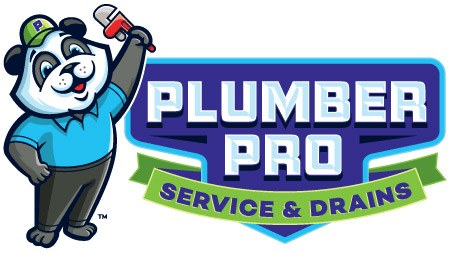How to Maintain Your Well Pump in Gwinnett County
Maintaining your well pump in Gwinnett County demands regular attention and a proactive approach to prevent costly breakdowns. Start by scheduling an annual inspection to catch any early signs of wear. Pay close attention to unusual noises, vibrations, and changes in water quality, and keep an eye on the water pressure gauge, which should stay between 40-60 psi. Cleaning the intake screen and inspecting seals and gaskets are also key steps. However, don’t overlook the significance of checking electrical components with a multimeter. Want to guarantee your well pump remains in top condition year-round?
- Schedule annual inspections with a certified technician to ensure optimal performance and catch potential issues early.
- Monitor the water pressure gauge regularly to ensure it reads between 40 and 60 psi and investigate any sudden changes.
- Clean the pump’s intake screen and inspect seals and gaskets to prevent blockages and leaks.
- Winterize your well pump by insulating exposed pipes and draining water to prevent freezing during cold months.
- Inspect the control box, fuses, and relays for damage, and conduct voltage testing with a multimeter to ensure electrical components are functioning properly.
Regular Inspections
Regular inspections safeguard that your well pump operates efficiently and prevents costly repairs. By sticking to a consistent inspection schedule, you can catch signs of wear early, guaranteeing that small issues don’t turn into major problems. Typically, a well pump should be inspected at least once a year. However, if your pump is older or heavily used, more frequent checks might be necessary to maintain its performance.
During your inspections, pay close attention to any unusual noises, vibrations, or changes in water quality. These can all be signs of wear that need addressing. Look for rust, leaks, and other visible damage around the pump and pipes. Regularly checking these aspects allows you to maintain the longevity and efficiency of your well pump.
When it comes to maintenance, you have two main options: professional maintenance or DIY options. Hiring a professional ensures a thorough inspection and expert repairs, which can be particularly beneficial if you’re not familiar with well pump systems. A pro can spot issues you might overlook and has the tools and expertise to fix them efficiently.
That said, there are several DIY options you can handle yourself if you’re comfortable doing so. Tasks like cleaning the pump, checking for leaks, and guaranteeing the electrical connections are secure should not be done without professional help.
Monitor Water Pressure
Watching your water pressure is crucial for maintaining your well pump’s smooth and efficient operation. Monitoring water pressure helps you catch potential issues early, preventing costly repairs and disruptions to your water supply.
Start by regularly checking the pressure gauge on your well system. This simple device provides real-time information about the water pressure and can alert you to abnormalities.
Your pressure gauge should read between 40 and 60 psi for peak performance. If the reading falls outside this range, it could indicate a problem with your pump motor or other components. Low water pressure might mean a clog or a leak in your system, while high pressure could stress your pipes and pump motor, leading to premature wear and tear.
Make it a habit to inspect the pressure gauge at least once a month to ensure everything is operating as it should.
If you notice a sudden drop or spike in water pressure, don’t ignore it. Investigate the cause immediately. Sometimes, the issue could be as simple as adjusting the pressure switch settings, but it could also signify more serious problems like a failing pump motor or pressure tank.
In such cases, it’s best to consult a professional to diagnose and fix the issue.
Clean the Well Pump
In addition to monitoring water pressure, you should also clean your well pump to guarantee it operates effectively and lasts longer. Proper pump maintenance is essential for your well system’s smooth functioning, and regular cleaning practices can prevent many issues down the line.
Begin by switching off your pump’s power supply to avoid accidents. Once the power is off, you can safely inspect and clean various components. Pay special attention to the pump’s intake screen, which can often get clogged with debris. Cleaning this screen is essential for maintaining ideal water flow.
Here are some steps you should follow to clean your well pump:
- Remove Debris: Clear any visible debris from around the pump and its housing. This helps in preventing blockages and ensures better performance.
- Clean the Intake Screen: Detach the intake screen and clean it thoroughly using a soft brush and water. If it’s too clogged, consider soaking it in vinegar to break down mineral deposits.
- Inspect Seals and Gaskets: Look for signs of wear and tear on seals and gaskets. If necessary, replace them to prevent leaks.
- Check for Corrosion: Examine the pump body and components for any signs of rust or corrosion. Cleaning these areas can extend the life of your pump.
- Lubricate Moving Parts: If your pump has any moving parts that require lubrication, make sure to apply the appropriate lubricant as recommended by the manufacturer.
Implementing these cleaning practices as part of your pump maintenance routine will help you avoid costly repairs and maintain that your well pump serves you efficiently for years to come.
Check Electrical Components
To secure your well pump operates reliably, you’ll need to inspect its electrical components for any signs of wear or damage. Begin by performing a thorough circuit inspection. Look for any frayed wires, loose connections, or signs of corrosion. Verifying all electrical connections are secure can prevent potential failures and extend the life of your well pump.
Next, conduct voltage testing on your pump’s electrical system. You’ll need a multimeter for this task. Start by turning off the pump’s power to avoid accidents. Once the power is off, set your multimeter to measure voltage and follow the manufacturer’s guidelines to test the voltage at various points in the system. Confirm the readings match the specifications outlined in your pump’s manual. If the voltage levels are off, it could indicate problems with the wiring or the power supply.
Don’t forget to inspect the control box of your well pump. Open the box and look for any burnt components or unusual smells that might indicate overheating. If any components appear damaged, it’s essential to replace them immediately to avoid further issues. Also, check the condition of the fuses and relays, as these are common points of failure.
While you’re at it, make sure to check the pump’s capacitor. A faulty capacitor can lead to inefficient pump operation or even complete failure. Replace it if you notice any bulging or leaking.
Seasonal Maintenance Tips
Regular seasonal maintenance guarantees your well pump runs efficiently throughout the year. You can avoid costly repairs and secure a consistent water supply by taking some simple steps. Here’s how you can maintain your well pump through the seasons.
Winterizing Techniques: As temperatures drop in Gwinnett County, protect your well pump from freezing. Insulate exposed pipes with foam covers and make sure the well house is properly sealed. If you have a jet pump, drain any water to prevent ice damage. Check the pitless adapter and well cap for submersible pumps for any signs of wear.
Summer Upkeep: During the hot months, your well pump’s demand can increase. Inspect the pump for leaks or unusual noises, as these can indicate potential issues. Clean the pump’s intake screen to ensure there’s no blockage, and check the pressure tank for proper settings. High temperatures can also affect electrical components, so ensure they’re in good condition.
Implementing precautionary measures can save you from unexpected breakdowns. Regularly check the system’s pressure gauge and clean any debris from around the well casing to prevent contamination. Keep an eye on water quality and sediment levels, adjusting your filtration system as needed.
Here are some essential tips to keep in mind:
- Inspect and insulate pipes during winter.
- Clean and check the pump’s intake screen in the summer.
- Monitor the pressure gauge regularly.
- Secure the well cap and pitless adapter to ensure they are in good condition.
- Check for leaks and unusual noises frequently.
Use a troubleshooting guide to address minor issues before they escalate. By staying proactive, you can secure your well pump remains reliable throughout the year. Consistent maintenance extends the pump’s lifespan and safeguards your water supply.
Frequently Asked Questions
How Do I Know if My Well Pump Is Running Dry?
You’ll know if your well pump is running dry through some key signs.
First, notice any changes in water pressure or unusual sounds from the pump.
Well pump maintenance and troubleshooting are essential. Regular water level monitoring can help you prevent this issue.
If the pump runs continuously without supplying water, it’s likely running dry.
Address these signs promptly to avoid damage and maintain system efficiency.
What Are the Signs of a Failing Well Pump Motor?
You’ll know your well pump motor is failing if you notice strange noises, reduced water pressure, or frequent cycling.
For motor maintenance, check for any visible wear or leaks. Troubleshooting tips include testing the electrical connections and examining the pressure switch.
If you’re unsure, consider repair options before replacement. Replacement costs can be high, so maintaining the motor is essential to avoid unexpected expenses.
Can Heavy Rain Affect My Well Pump’s Performance?
Yes, heavy rain can affect your well pump’s performance.
To prevent performance issues, take preventive measures like sealing the well cap and ensuring proper drainage around the well.
If you experience problems, start troubleshooting by checking for water contamination or electrical faults.
Regular maintenance tips include inspecting the pump, testing water quality, and cleaning the well area.
These steps help maintain peak performance and prolong the pump’s lifespan.
How Often Should I Test My Well Water Quality?
You should test your well water quality at least once a year. Regular water testing frequency guarantees your water remains safe to drink and helps you catch any contaminants early. This is an essential part of well pump maintenance.
If you’ve had any recent work done on your well or if there’s been heavy rainfall, consider testing more frequently. Stay proactive to maintain both your water quality and well pump’s performance.
What Should I Do if My Well Pump Starts Making Unusual Noises?
Check your manual for troubleshooting tips if your well pump starts making unusual noises.
Look for common issues like debris or misalignment.
If that doesn’t help, consider repair options from a professional.
Regular maintenance practices, like checking for wear and tear, can prevent noise issues.
Always keep an ear out for changes and address them quickly to avoid major problems down the line.

